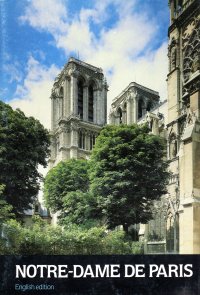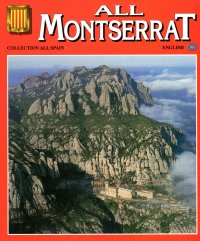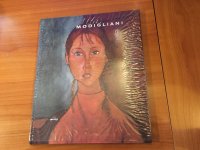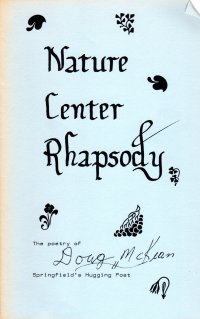 It seems like it took me a lot longer to read this book than it did. As you might remember, gentle reader, I bought this book along with two others (Divine Fruit and Four Gates to Health: Eastern Ideas and Techniques for Vital Living) last May at an ABC Books book signing. I read the collection of poetry soon after I bought the books, and I am pretty sure that I started this book in the beginning of June last year.
It seems like it took me a lot longer to read this book than it did. As you might remember, gentle reader, I bought this book along with two others (Divine Fruit and Four Gates to Health: Eastern Ideas and Techniques for Vital Living) last May at an ABC Books book signing. I read the collection of poetry soon after I bought the books, and I am pretty sure that I started this book in the beginning of June last year.
It has the word devotional right in the title, and that’s what it is: A Hindic yoga-based devotional with 365 entries ranging from a couple sentences to a couple of pages. Each is designed to make you think, to let go, and perhaps, if you’re an active yoga practitioner, something to think about when you’re sitting. Although in Buddhism, you’re supposed to try to empty your mind as you sit, perhaps you’re allowed to think in yoga. Or maybe these are things to think about at other times.
The daily bits range from stories about people she meets and how they inspire her to simple little aphorisms about recognizing beauty around you in everyday things. Some are a bit twee, and some of the stories seem a bit self-congratulating about helping others.
At any rate, as I mentioned, it took me a while to read it. Partly because it’s typeset in an italic font, which slows one down when it comes to reading. Perhaps that’s the intent. The other was that I was not doing it in a steady day-by-day fashion–I would go in read a couple of days’ worth of these devotions to end a night of reading fiction for a couple days, and then I would set it aside for a while, and then I would read a couple more.
I enjoyed it and grokked it a bit more last year when I started it. Looking back, I really haven’t steeped myself in Buddhist and Hindu thought much this year–maybe they haven’t spoken to me following a year of losses. As I finished it over the last couple of weeks, though, the message did not speak to me as much.
So I probably enjoyed it overall more than the poetry and probably more than I’ll enjoy the nutrition book when I get to it. Perhaps I would have enjoyed it and gotten more out of it in a more receptive frame of mind.



 Okay, wow, now that is impressive. I have recently read a book on
Okay, wow, now that is impressive. I have recently read a book on  This is the third of Munroe’s books I read. I read
This is the third of Munroe’s books I read. I read  I picked up this book at ABC Books
I picked up this book at ABC Books  On a recent visit to the Kansas City area, my aunt said she was looking to get rid of some books that someone had given her, so I took the lot. Which was good, as I was staying in a hotel that night and had somehow failed to bring a book to read. Atop the stack was a book by David Baldacci; I kind of recognized the name because my beautiful wife has been known to get his books from the library from time to time. So I started with this one.
On a recent visit to the Kansas City area, my aunt said she was looking to get rid of some books that someone had given her, so I took the lot. Which was good, as I was staying in a hotel that night and had somehow failed to bring a book to read. Atop the stack was a book by David Baldacci; I kind of recognized the name because my beautiful wife has been known to get his books from the library from time to time. So I started with this one. You might have thought I already read this book, gentle reader–I could see how I might have gotten that impression, as I have already perused
You might have thought I already read this book, gentle reader–I could see how I might have gotten that impression, as I have already perused  Sixteen years after
Sixteen years after  In keeping with the tradition, I am tearing through the travel and art books I’ve bought this summer and autumn on Sunday afternoons, Monday evenings, and occasionally Thursday evenings as I “watch” football games (which is more and more meaning I look up from my book to check the score from time to time). The weather has again turned to autumn at Nogglestead, and I like nothing better than lighting a fire (okay, a
In keeping with the tradition, I am tearing through the travel and art books I’ve bought this summer and autumn on Sunday afternoons, Monday evenings, and occasionally Thursday evenings as I “watch” football games (which is more and more meaning I look up from my book to check the score from time to time). The weather has again turned to autumn at Nogglestead, and I like nothing better than lighting a fire (okay, a  I said when I reported on
I said when I reported on  You know, gentle reader, for the last couple of weeks, most of my reading has been poetry, art monographs, travel books, and Christian self-help kinds of books (we’ll get to those by and by). Given the sheer number of those books that I’ve polished off in the last couple of weeks, it seems like a long time since I read any fiction (it’s not–I read
You know, gentle reader, for the last couple of weeks, most of my reading has been poetry, art monographs, travel books, and Christian self-help kinds of books (we’ll get to those by and by). Given the sheer number of those books that I’ve polished off in the last couple of weeks, it seems like a long time since I read any fiction (it’s not–I read  This book describes the Montserrat monestary just ourside of Barcelona, Spain. The monestary complex sits upon a mountain that has a rather distinctive shape with multiple rock features with individual names; the first part of the book describes its formation and how the natives named pretty much every rock on it over the millennia.
This book describes the Montserrat monestary just ourside of Barcelona, Spain. The monestary complex sits upon a mountain that has a rather distinctive shape with multiple rock features with individual names; the first part of the book describes its formation and how the natives named pretty much every rock on it over the millennia.  Instead of a single artist’s monograph, this book collects a number of paintings of the sea from Pieter Brueghel the Elder’s “Fall of Icarus” to modernist twaddle like Jackson Pollock’s “Blue (Moby Dick)”. So you can take one subject like this and kind of chart the evolution of painting through the depiction of sea-side scenes.
Instead of a single artist’s monograph, this book collects a number of paintings of the sea from Pieter Brueghel the Elder’s “Fall of Icarus” to modernist twaddle like Jackson Pollock’s “Blue (Moby Dick)”. So you can take one subject like this and kind of chart the evolution of painting through the depiction of sea-side scenes. Well, this is a relatively recent travel book. Most of the time, I find these old travel books are from the 1960s or the 1980s, but someone who went to France in this century brought this back, and this person or the heirs sold it to Calvin’s Books for me to pick up
Well, this is a relatively recent travel book. Most of the time, I find these old travel books are from the 1960s or the 1980s, but someone who went to France in this century brought this back, and this person or the heirs sold it to Calvin’s Books for me to pick up  You know, I wanted to really dislike Frida Kahlo’s work because she’s so celebrated by modern tastemakers because she was a foreign Communist bisexual back in the day. Because that’s what titillates a lot of people who want to be seen as right-thinking more than their response to the art itself, their response to the artist as celebrity. Which Frido Kahlo was and might well still be. I mean, I’ve seen ads for merchandise with her on them even in this twenty-first century.
You know, I wanted to really dislike Frida Kahlo’s work because she’s so celebrated by modern tastemakers because she was a foreign Communist bisexual back in the day. Because that’s what titillates a lot of people who want to be seen as right-thinking more than their response to the art itself, their response to the artist as celebrity. Which Frido Kahlo was and might well still be. I mean, I’ve seen ads for merchandise with her on them even in this twenty-first century. Have you heard the name Modigliani? I had not. He lived a brief consumptive life around the turn of the century in France, and his art work is somewhere between the Impressionism or whatever Gauguin did and Picasso; the images are representative but distorted in proportion and brutal in execution. He was only starting to get some recognition when he passed away from tuberculosis, so he’s really only known amongst art people, and perhaps fewer of them as we go along.
Have you heard the name Modigliani? I had not. He lived a brief consumptive life around the turn of the century in France, and his art work is somewhere between the Impressionism or whatever Gauguin did and Picasso; the images are representative but distorted in proportion and brutal in execution. He was only starting to get some recognition when he passed away from tuberculosis, so he’s really only known amongst art people, and perhaps fewer of them as we go along. This book collects four pieces from Milton which do not have Paradise in the title and are not about his blindness. “L’Allegro” presents life as a person with a happy outlook. “Il Penseroso” presents life from a melancholy outlook. “Comus: A Masque” is a brief verse play wherein the sorceror child of Circe and Bacchus tries to tempt a virtuous woman to give up her life of chastity and to enjoy natural, sensual delights. And “Lycidas” is an elegy for a drowned companion that detours into political commentary that diminishes its impact.
This book collects four pieces from Milton which do not have Paradise in the title and are not about his blindness. “L’Allegro” presents life as a person with a happy outlook. “Il Penseroso” presents life from a melancholy outlook. “Comus: A Masque” is a brief verse play wherein the sorceror child of Circe and Bacchus tries to tempt a virtuous woman to give up her life of chastity and to enjoy natural, sensual delights. And “Lycidas” is an elegy for a drowned companion that detours into political commentary that diminishes its impact. As you might know, gentle reader, I sometimes take my children to the Nature Center here in Springfield, so I’m familiar with some of the locations mentioned in the book. And, in a Springfieldian turn of events, my beautiful wife nows the author: his wife taught algebra and his child played in the band with her. So I’d better not go too hard on the fellow as it might stifle our social life.
As you might know, gentle reader, I sometimes take my children to the Nature Center here in Springfield, so I’m familiar with some of the locations mentioned in the book. And, in a Springfieldian turn of events, my beautiful wife nows the author: his wife taught algebra and his child played in the band with her. So I’d better not go too hard on the fellow as it might stifle our social life. Nancy Erkholm Burkert is a Wisconsin- and maybe even Milwaukee-based illustrator and artist, and I never heard of her before. Which is probably a ding on my knowledge of Wisconsin, but in my defense, I was not browsing art books all that much in my school days. Although I did go to the Milwaukee Art Museum fairly frequently, and surely it must have some of her work, ainna?
Nancy Erkholm Burkert is a Wisconsin- and maybe even Milwaukee-based illustrator and artist, and I never heard of her before. Which is probably a ding on my knowledge of Wisconsin, but in my defense, I was not browsing art books all that much in my school days. Although I did go to the Milwaukee Art Museum fairly frequently, and surely it must have some of her work, ainna? Well, now, gentle reader, I will have another section to pick through at the Friends of the Springfield-Greene County Library book sale: Architecture (and home design). I bought this book
Well, now, gentle reader, I will have another section to pick through at the Friends of the Springfield-Greene County Library book sale: Architecture (and home design). I bought this book